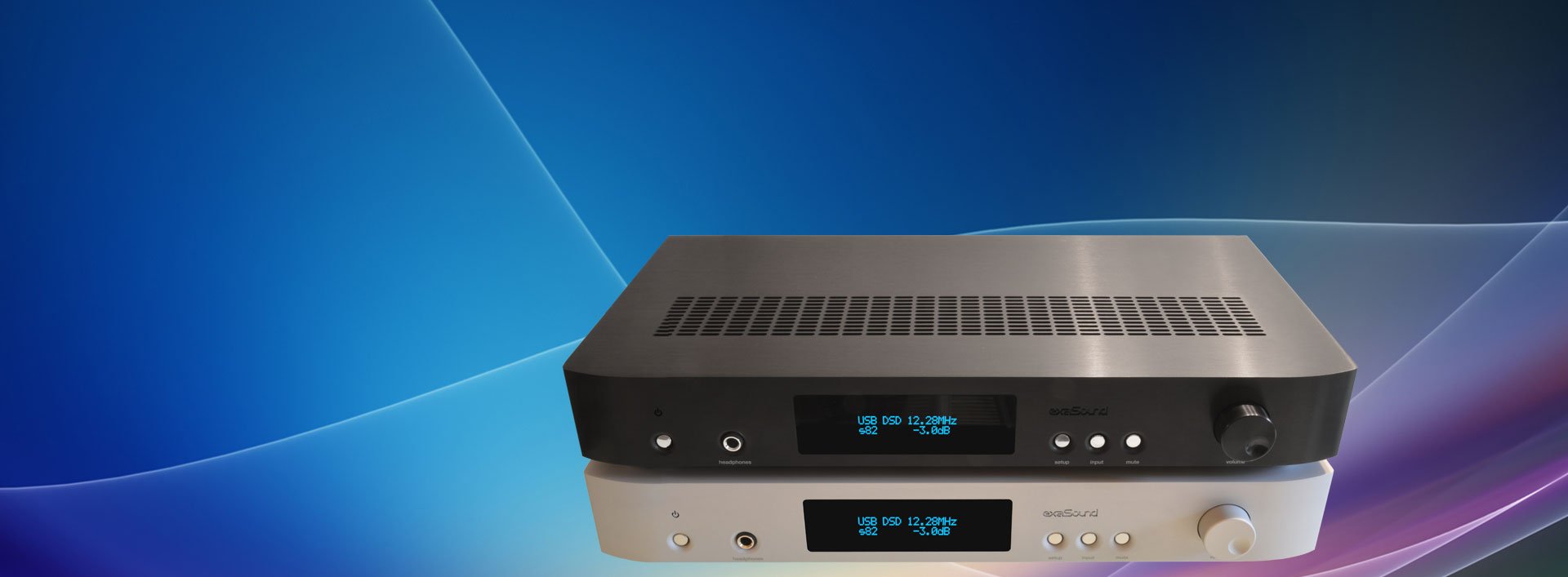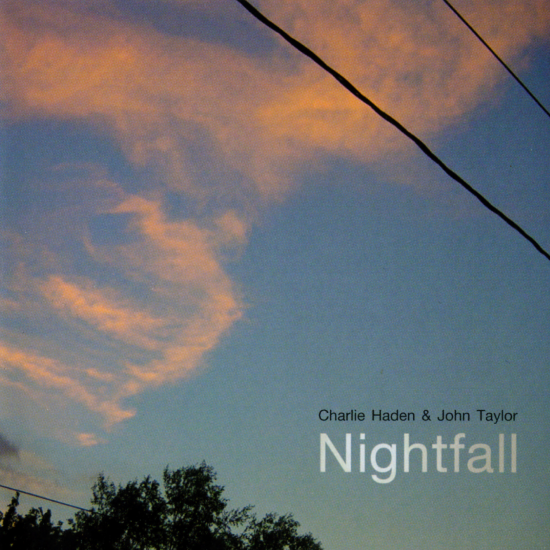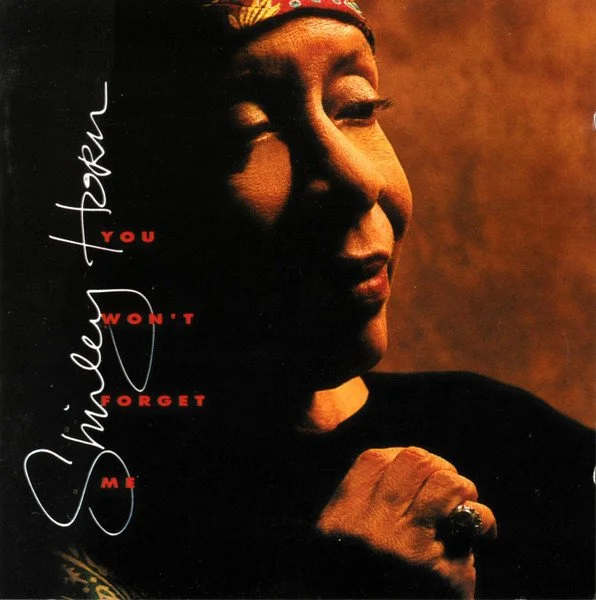EXASOUND AUDIO s82 STREAMER - REVIEW
EXASOUND AUDIO s82 STREAMER
There are numerous digital options out there these days, from media players to streamers to digital transports, as well as CD players and CD transports, of course, which should not be forgotten in the event of a momentary internet glitch—just saying. And in truth, streamers and their like have come a very long way in terms of their technical abilities and sound quality. When matched to a Top of the Line (TOTL) DAC (Mola Mola, Bricasti Audio, etc.), the resulting sound can challenge all formats.
However, for those not in the know, the differences between streamers, digital transports, and media players are rather straightforward. A streamer is basically a network player that may have internal storage capability. A networked transport has no such internal memory applicability. And a media player has both internal storage capability and a DAC to boot, which connects it directly to a preamp, integrated, or, potentially, amplifiers (if volume control is part of the media player). The streamer and the digital transport can receive data from a computer and both can be connected to a DAC and in some cases, the streamer can also receive input from a CD transport or other device (Grimm Audio MU1). The media player, with its built-in DAC, can receive input from other streamers or transports as well as, if given such functionality, input from analog devices (turntable, tuner). That being said, there is great variability between the various devices.
This brings us to the focus of this review, the Exasound Audio s82 Streaming DAC. In terms of the above nomenclature, the Exasound s82 is a media player that, while offering limited USB connectivity, can take digital inputs—SPDIF, Toslink—from both streamers and transports. Those who require a one-box solution to their digital music needs, with millions of tracks instantly at their disposal via a growing list of streaming services—Qobuz, Pandora, Spotify, Tidal, etc.—will be well served.
REFRAIN: Unlike most reviews, this review will be non-sequential, as it will start with how the headphones actually sound and not the process of physically “undressing” them and/or laying out their various parts, specifications, etc. Think of this review, then, as a non-linear movie—Memento, Kill Bill, Arrival, Eternal Sunshine of the Spotless Mind, etc.—that likewise starts at the end and winds its way to the beginning.
THE SYSTEM
Grimm Audio MU1 Streamer
Exasound s82 Streamer/DAC
Silent Angel Bonn NX Network Switch
Silent Angel Genesis GX Master Clock
Bricasti Design M1SE DAC/Streamer
Lyric Audio Ti-100 MkII SET Integrated
Vivid Audio Kaya45 Speakers
Kubala Sosna Cables/Wires/Power Cords
RSX Power Cords (Beyond, MAX)
TORUS POWER AVR ELITE Power Conditioner
THE SOUND
There was not a musical genre—classical, jazz, blues, electronica, folk, R&B—where the s82 did not comport itself well. This translates to the s82 as a media player that bats far above its price point, making it competitive with other media players at its price point and a good deal above.
The Exasound Audio s82 ($6,599), however, as compared to our two channel reference pair—Grimm Audio MU1 and Bricasti Design M1SE ($27,500)—was not at all their match or equal in any respect, nor should it have been. The differences were quite clear, as our reference pair far exceeded the abilities of the s82. That said, our combo was not four times better than the Exasound s82, which managed to breach the 50 percent barrier at a quarter of the cost.
The Exasound s82 volumetric cube—its soundstage—connected directly to the Lyric Audio Ti 100 MkII SET Integrated, projected a broad soundstage with quite good depth, exceptional placement of performers on stage, and good height as well. Tone and timbre were very good, only falling short in comparison to our reference Streamer/DAC combo, which were more natural, possessed of greater timbral and tonal shadings, and demonstrated more weight across the entirety of the frequency spectrum. At four times the cost, however, this comes as no surprise—and it shouldn’t. Overall, staging—positioning, separation, layering—was very good.
The one-box media player that is the Exasound s82 is an exceptionally competent source, which brings both a wonderful musicality and noteworthy technical acumen to the reproduction of music. That its umbilicus—ethernet input—allows it to tap into literally millions of tracks will be for most all that is needed in the early 21st century.
Toward the end of the Exasound Audio s82 review, the Grimm Audio MU2 ($17,500) media player arrived in-house for its upcoming review. As it was placed into the system for burn-in, it was clear from the start that it could clearly rival our reference separates, unlike the very good s82, though again, at nearly two and a half times the cost, it should be. More on that later.
BASS
The s82’s bass is resolute, tight, detailed, and very nicely resolving. There is no bloat or “anemia” with regard to the weight of bass notes across the bass region and into the lower midrange. And in doing this, the s82 easily sidestepped the loss of transparency or detail. On Charlie Haden and John Taylor’s Nightfall (Naim Records), the track “Chairman Mao” is beautifully and richly captured and all of its quiet intricacies, its microdynamics, and the deep quiet between notes are top-shelf. Few media players at the s82’s price point can capture the nuance, bring the clarity or push forward the music’s progression—Pacing, Rhythm, and Timing (PRaT). The s82 competently proved the latter with Delfaeyo Marsalis’ “The Secret Love Affair” (The Last Southern Gentleman, Troubadour Jazz Records) where PRaT was, indeed, beautifully served. The music was propulsive, as referred to earlier, with players and their instruments—clearly delineated across and at depth in the soundstage. While the Exasound s82 is not our reference combo—Grimm Audio MU1 and Bricasti Design M1SE (Special Edition)—it easily pushes past 50% of their performance for a quarter of their combined price.
MIDRANGE
The s82 is very proficient at capturing not only the detail, but the nuance and decay, while laying bare the intricacies of a singer’s articulation. Voices are indeed forward with the s82, and those wedded to the human voice will be well served. Shirley Horn’s “Beautiful Love” (You Won’t Forget Me, Verve) is superbly rendered by the s82. Toots Thielemans’ harmonica is tactile, ethereal, as it emerges from a black-quiet background. Shirley’s voice is rich, intimate, beautifully resolved, which finds her articulations and their intricacies detailed and transparent. The Exasound s82 captured “Beautiful Love” and its various musicians with technical and musical prowess.
TREBLE+
The treble of the s82 is well extended and it does not shy away from the nosebleed heights of reproduction within this frequency range. Thus, it is by no means agoraphobic. Hilary Hahn’s quite short (27 minutes) but incredibly engaging Rest album (Deutsche Grammophon) is rendered beautifully from both a technical and musical perspective. All the technical intricacies—transparency, resolution, detail, microdynamics/transients, etc.—of her performance and its wonderfully engaging, poignant musicality are intact. To date, only our reference DAC/Streamers—Mola Mola Tambaqui, Bricasti Audio MU1—perform at a much higher level, as well they should, given that their respective prices are at least twice that of the Exasound s82. But again, the s82 will easily take you to 50% of their ability and many will be satisfied to stay here and enjoy this quite talented Streaming DAC.
DESIGN—LOOK, FEEL
The Exasound s82 is a slim silver (or black) rectangular metal case that is lightweight and easy to handle and place.
Its front facade contains, from left to right, an ON/OFF switch, a headphone output, a digital operation window, a Setup button, an Input button, a Mute button, and a Volume control knob.
The s82’s back facade features, from left to right, two WiFi antennas, an Ethernet port, several USB inputs, an HDMI input, a power connection, digital inputs—SPDIF, Toslink, USB, a secondary power port specifically for the digital section, and both single-ended and balanced analog outputs.
FUNCTIONALITY
The Exasound s82 is a stand-alone Streaming DAC that can connect directly to internet via its ethernet port, and since it employs ROON and a host of streaming options—Qobuz, Tidal, Spotif, UPnP—it can easily begin streaming your music or musical library from a multitude of sources.
The Exasound s82 also includes an MQA decoder and renderer, which performs the full unfolding for the maximum realization of MQA’s 24-bit 384kHz resolution.
Sampling Rates:
DSD64: 2.8224 and 3.072 MHz
DSD128: 5.6448 and 6.144 MHz
DSD256: 11.2896 and12.288 MHz
DSD512: 22.5792 and 24.576 MHz
PCM/DXD: 44.1kHz to 384kHz at 32 bits
MQA full “unfold” for delivering Hi-Res music data up to 384kHz
For more detailed information on the Exasound Audio s82 Streaming DAC, please follow this link: Exasound Audio s82 Streaming DAC
SPECIFICATIONS
Please follow the link below to access the rather lengthy list of specifications for the Exasound Audio s82 Streaming DAC
CONCLUSION
Before you go for the big-buck TOTL media players from other well-known brands, you will definitely want to audition the Exasound Audio s82 Streaming DAC. It’s that good, and it may well save you several thousand dollars while giving you similar or even better sound performance.
Ergonomically, it’s light, one-hand portable, nice to look at, especially sitting on top of a shelf or cabinet, with a multitude of functionally appropriate bells and whistles—ROON Ready, MQA, DSD, wireless, etc.—that will easily meet your various streaming needs in one box.
When we come across components that are batting well above their price point and doing so while embracing exceptional technical acumen and musicality, we can’t help but recognize them for doing so. That said, the Exasound Audio s82 has easily attained our GoldKeyNote Award for excellence and for performing above the various components in its price class.
Pros: Wonderful musicality, technically skilled, a one-box powerhouse that will easily fit and coalesce into most if not all audio systems.
Cons: To be picky, the two-pronged power connection (though George Klissarov has said it provides better sound than the three-prong grounded connector).
THE COMPANY
eXAsound AUDIO design
Exasound Audio s82 Streaming DAC ($6,599)
George Klissarov
3219 Yonge Street, Suite 354
Toronto, Ontario
Canada M4N 3S1
www.exasound.com






